-
German police uses backdoor Trojan to monitor Skype calls
A backdoor Trojan capable of monitoring online activity and recording Skype calls has been detected — and is allegedly being used by the German police force
-
-
TraceSpan Communications shows new interception device
DOCSIS Phantom intercepts target communications directly from the line and collects a hundred percent of the information in both directions, to and from the ISP or communications provider; the device allows interception of all data, including peer-to-peer communication, even when it does not pass through the ISP server
-
-
U.S. army orders 315 reconnaissance micro-robots
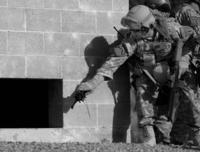
Recon Scout XT weighs 1.2lbs (540g), can be deployed in five seconds, and thrown up to 120 feet (36m); soldiers and law enforcement use the Recon Scout system to determine the layout of the enclosed spaces, identify potential IEDs, and the fix the location of friendly, indigenous, or enemy personnel
-
-
Teal Group: global UAV market to total $94 billion in the next ten years
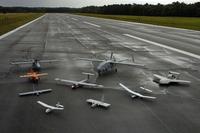
Unmanned Aerial Vehicles (UAVs) have been the most dynamic growth sector of the world aerospace industry this decade; a new market study estimates that UAV spending will almost double over the next decade from current worldwide UAV expenditures of $5.9 billion annually to $11.3 billion, totaling just over $94 billion in the next ten years
-
-
Study shows surveillance cameras reduce crime, in some cases
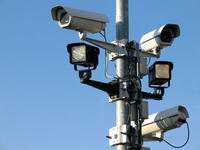
A recent study found that security cameras in urban areas have had mixed results in preventing crime; the study aimed to determine whether installing surveillance cameras to reduce crime is an effective use of scarce resources, especially with states struggling with soaring budget deficits and police departments facing steep cuts; the study found that the efficacy of cameras varies and is largely dependent upon how the surveillance system is set up and monitored
-
-
Aussies want license plate-readers connected to drones
Canberra law enforcement authorities want to begin using UAVs together with license plate readers to track, autonomously, vehicles of interest; the police is considering using speed-detection systems to detect stolen cars or unregistered vehicles — and even integrate them into a broader surface-to-air surveillance network
-
-
Ogden, Utah police first-in-nation to use surveillance blimp
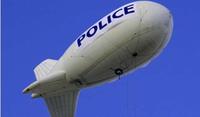
A patrol car fitted with all of the police extras cost $40,000; a surveillance blimp will cost well below that — possibly as low as $15,000; after that, it is $100 a week to keep it filled with helium and charge its electric batteries; the police in Ogden, Utah, decides this is a good deal
-
-
Supreme Court to rule on age of "Big Brother" surveillance

This November the Supreme Court is gearing up to hear a landmark case which will decide how far law enforcement agencies can pry into an individual’s private life; federal judges argue that the use of GPS surveillance by law enforcement is an “Orwellian intrusion” into private life and violate the Fourth Amendment; meanwhile police say GPS tracking is simply a more efficient way to tail a suspect’s car or track their movements, things they can currently do without a warrant
-
-
Researchers developing "soft biometric" video analysis system
Researchers in Australia are developing a way to identify individuals using “soft” biometrics like their estimated weight, hair color, and skin tone in video footage; the researchers hope to create a Google-style search, where police officers can actually search for an individual in hundreds of hours of video footage just by typing in a basic description
-
-
Flying video camera will protect soldiers
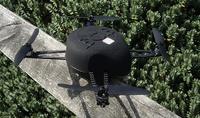
Engineers have developed the U.K.’s first lightweight outdoor flying video camera which can fit in a soldier’s backpack; the UAV is designed to help spot hidden dangers and feed the real-time footage to goggles worn by the operator
-
-
New first response, military tool: surveillance insects

Micro air vehicles (MAVs) are tiny, insect-size UAVs used for search-and-rescue operations, surveillance, monitoring of hazardous environments, and detection of explosives; University of Michigan researchers had an idea: rather than build insect-size UAVs, why not use the insects themselves to fly these missions?
-
-
Terrahawk showcases its mobile surveillance vehicle
This Thursday Terrahawk, LLC will show off its Mobile Utility Surveillance Tower (MUST) to members of the U.S. House of Representatives and the Senate along with their staffs; with MUST, law enforcement agencies can quickly set up a mobile surveillance tower for emergency response, crowd control, or general surveillance
-
-
Thermal imaging allows ATM theft from a distance
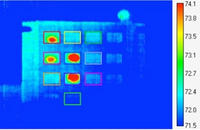
ATMs’ PINs can be stolen using thermal imaging cameras; when ATM customers press down keys to enter their personal code number, they leave behind residual heat from their fingertips; thermal imaging cameras can catch these numbers
-
-
Facebook could mean the end of undercover ops
Law enforcement officials have begun using Facebook to identify criminals and gather information about their habits, but the technology has the potential to be a double edged sword; an undercover officer could successfully infiltrate a gang only to have their cover blown after their photo is recognized and their Facebook profile carefully scrutinized
-
-
Vumii unveils new thermal imaging cameras
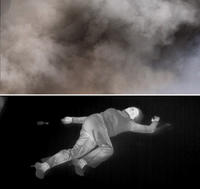
Vumii, a firm that specializes in developing surveillance cameras, recently announced the addition of four new thermal imaging camera lines, expanding on its existing line of LED and laser-illuminated cameras
-
More headlines
The long view
How DHS Laid the Groundwork for More Intelligence Abuse
I&A, the lead intelligence unit of the Department of Homeland Security (DHS) —long plagued by politicized targeting, permissive rules, and a toxic culture —has undergone a transformation over the last two years. Spencer Reynolds writes that this effort falls short. “Ultimately, Congress must rein in I&A,” he adds.
